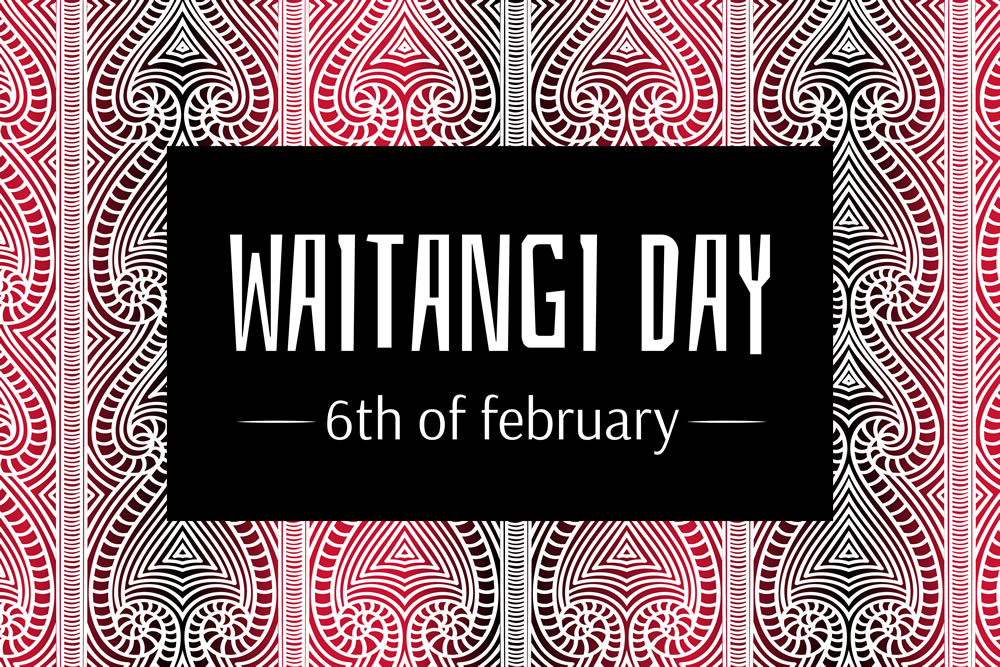Commemorating Waitangi Day at child care
Published on Wednesday, 03 February 2021
Last updated on Friday, 29 January 2021

February 6 is much more than just a public holiday. It’s the date on which the Treaty of Waitangi was signed, back in 1840, and this national day is an opportunity to reflect on our founding document and commemorate, ‘The coming together of the peoples of New Zealand in a Treaty partnership.’
In the early childhood education (ECE) setting, there are lots of ways to mark Waitangi Day and teach tamariki about New Zealand’s history and culture.
At Buckle My Shoe Early Learning Centre, music, movement, words, images, and special items and activities are used to weave Waitangi Day into tamariki’s early learning. So, let’s see how this ECE service approaches the Day and teaches tamariki about a defining date in New Zealand’s nationhood:
1. At Buckle My Shoe, te reo Māori is incorporated into tamariki’s learning experiences in the lead-up to Waitangi Day, and all through the year
Youngsters start the day by singing their ‘Haere Mai Welcome Everyone’ waiata and the old favourite, ‘Kina Kina Kai Moana’ during morning mat-time.
They also revisit the days of the week in both English and te reo Māori, beginning with Rāhina/Monday and finishing with Rātapu/Sunday.
2. Verbal and visual information is then used to explain Waitangi Day
The educator announces that everyone is getting a special day off on 6 February to spend time with their family/whānau, because it’s Waitangi Day/Te tiriti o Waitangi.
To explain how this Day came about, they show tamariki the Polynesian Islands on a World Map, and describe how many, many years ago, Māori ancestors sailed their wakas from these islands and settled in Aotearoa/New Zealand.
They then circle England and Europe on the map and explain that many years later, whalers, sailors and European settlers sailed across the seas and settled in Aotearoa/New Zealand as well.
Tamariki are told that there were some disagreements between both cultures about how to live, so a special document called Te tiriti o Waitangi – or the Treaty of Waitangi – was created to help with this.
The group is then shown a picture of the signing of the Treaty of Waitangi on 6 February, 1840, and one of Tamati Waka Nene of Ngapuhi, a Māori chief who signed the Treaty.
This history lesson prompts some questions along the way, and everyone explores these enquiries together. For instance:
- When someone asks what a ‘waka’ is, the answer is found in a picture book. The tamariki learn about the two main waka/canoes that arrived in their area all those years ago – the Takitimu and Mataatua – and connections are made in the ECE service and the wider community. A waka wall-hanging is pointed out in the classroom, and several tamariki remember a waka they’ve seen preserved in the city.
- When someone asks what a ‘document’ is, the educator explains that, ‘In this case, it’s a piece of paper that states the rules of a place that everyone has agreed to, to promote harmony.’
This explanation is tied in with The Buckle My Shoe Treaty that the tamariki made together, which contains agreements to do things like, ‘use our gentle hands,’ ‘be kind’ and ‘respect our environment’.
3. Tamariki are encouraged to explore a Waitangi Day display
This display is assembled in a quiet corner of the preschool room so that tamariki can look at it when they like, and it includes a copy of the Treaty of Waitangi, taonga, kai moana shells, poi, headbands, rakau sticks, a kite, woven items, pictures of the Treaty being signed, and publications that show New Zealand’s history.
4. Cultural activities are used to inspire curiosity, build understanding and practice skills
Throughout the day, tamariki get a chance to make piu piu/Māori skirts from newspaper, weave strips of colourful paper and learn more te reo Māori. They also get to explore special Māori symbols and their meanings using a variety of mediums.
All in all, Buckle My Shoe Early Learning Centre says that it keeps, ‘The spirit and promise of the Treaty alive by incorporating the Māori culture throughout our daily experiences and routines.’
On an ongoing basis, they practise te reo Māori with tamariki, read books about Māori culture, integrate Māori values throughout daily routines, and offer activities and experiences that respect New Zealand’s history and celebrate our nation.
This is all very positive, and it’s important to remember that these kinds of early learning experiences translate easily from child care to home.
There are simple ways to practice te reo Māori with your tamariki, lots of excellent books that include Māori language and stories, and if you have a primary-school aged child, this Waitangi Day activity book from the Museum of New Zealand is fantastic, too.
Together, Kiwis can commemorate the past and embrace the future, and we hope you have a great Waitangi Day with your whānau.
Related Articles

The important art of sharing
Basic sharing skills developed in the preschool years can have positive effects on communication and socialisation long into the future.

The significant rise in preschoolers using Te Reo Māori
New research has demonstrated greater knowledge and use of Te Reo Maori among preschool-aged children. This article looks at the research, explains why it is important and how parents can boost their child’s Te Reo skills.

How to celebrate Māori Language Week
Ways for families to participate in Maori Language Week, including learning one Maori word per day, creating an activity book and learning to sing the national anthem in Maori.